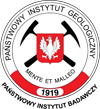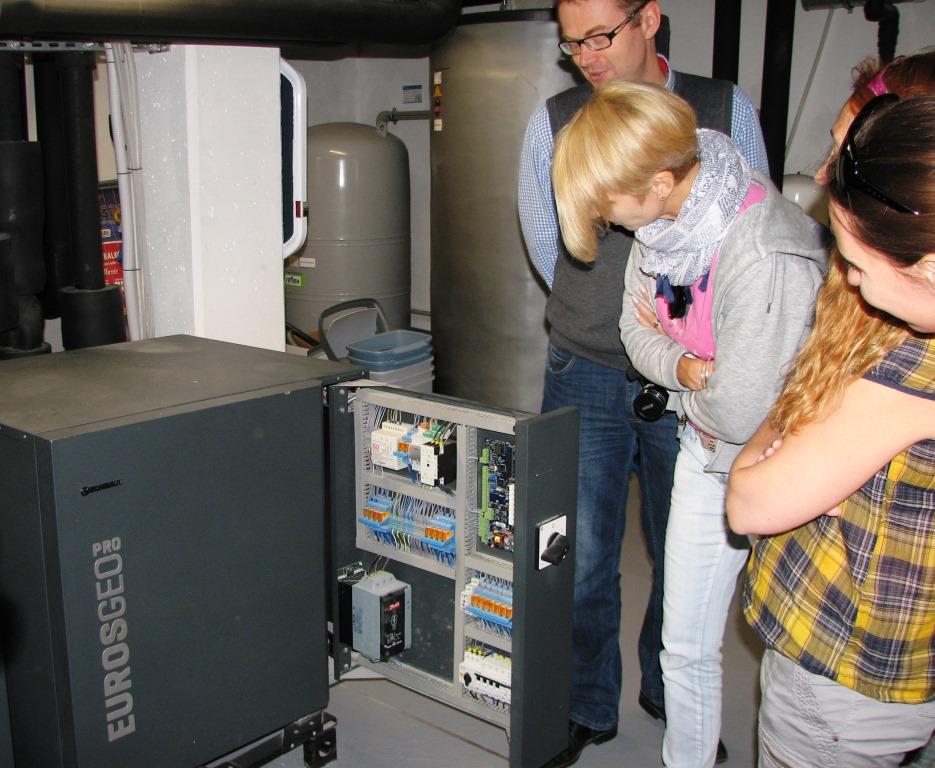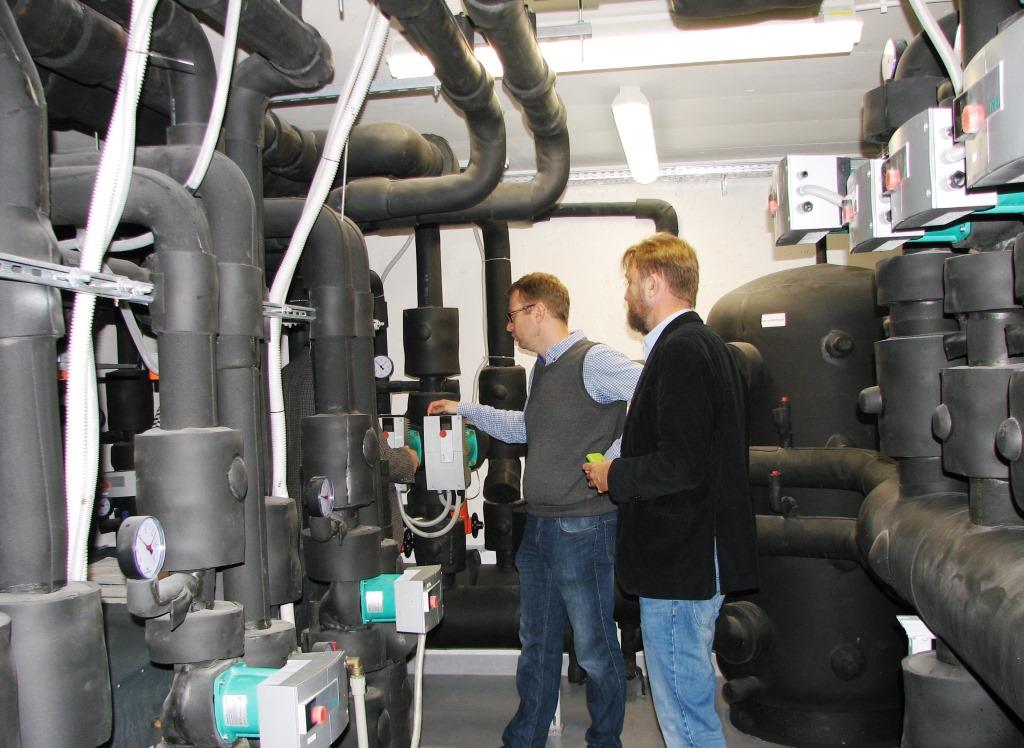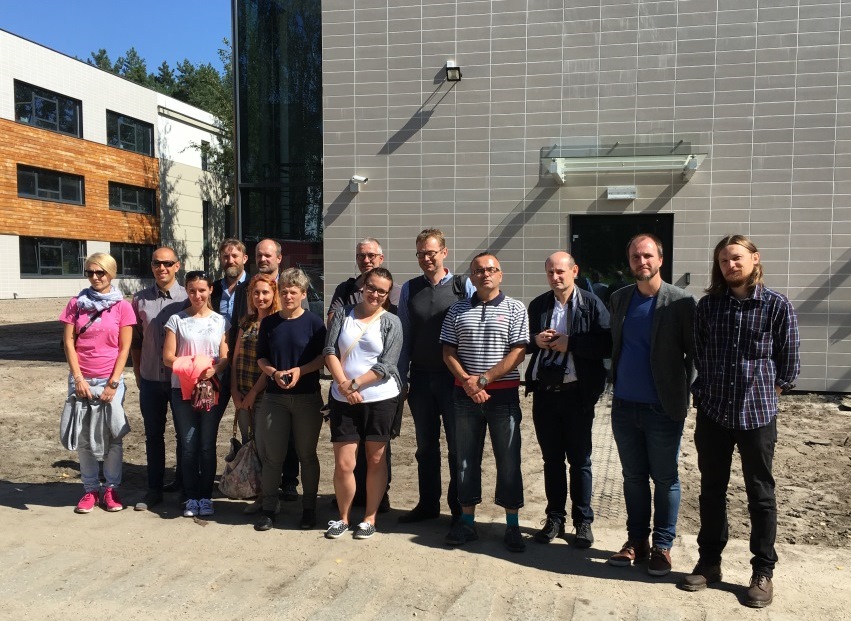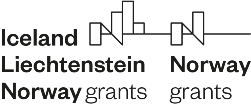Low-temperature geothermal energy is successfully used in Poland for heating not only single-family houses but also large residential buildings and industrial plants.
On the last day of August, the Polish-Norwegian team of geologist learnt about the functioning of a modern ground-source heat pump installation located in a cosmetics plant in Jozefow near Warsaw as part of a study visit conducted in connection with the implementation of the Geothermal4PL project: “Support for the sustainable development and use of shallow geothermal energy in the areas covered by the Mieszkanie Plus programme in Poland”.
The specialists from the Polish Geological Institute – National Research Institute (PIG-PIB) and the Norwegian guests from Christian Michelsen Research (CMR) visited factory facilities equipped with a modern low-temperature geothermal system. The system was designed and manufactured by Euros Energy (eurosenergy.com). Euros Energy and PIG-PIB are members of the international scientific network named Cooperation in Science and Technology (COST) – TU1405 Geothermal Energy Applications in Buildings and Infrastructure (GABI) – (foundationgeotherm.org). Thanks to the cooperation of both institutions, it was possible to organise a visit to Jozefow.
A visit to the facility using low-temperature geothermal in Jozefow
The scientists visited two production buildings. The low-temperature geothermal system in these buildings is a custom-built solution designed specifically for this factory. The installation provides both heating and – above all – cooling capability. Cooling is required by the industrial injection moulding machines used in the manufacture of plastic cosmetic packaging. This process is based on the operation of a ground-source heat pump and the storage of the post-production waste heat in the ground. The operation of the injection moulding machines is continuous and lasts 3 shifts, so the demand pattern of this facility is very different from typical storage or residential buildings. It was, therefore, necessary to design a ground-source heat pump system in such a way that the ground could deliver the required amount of energy and provide a continuous and trouble-free operation of the system.
The system uses EurosGEO cascade heat pumps with the unit power of 60 kW. The supply system of the first building is equipped with four such pumps while the other building has as many as seven pumps. They jointly generate the power of more than 650 kW. The lower heat source in the system is provided by boreholes – through the borehole heat exchangers with the depth of 100 m each. The total length of the boreholes for both buildings is about 7 linear kilometres.
The installation using low-temperature geothermal in Jozefow
The geological conditions in the substrate of the project are very beneficial for the efficiency of the ground-source heat pumps – as there is a layer of water-rich Pleistocene sands with the thickness of more than 40 m, characterised by high values of thermal conductivity and heat capacity per unit. The system is also equipped with “free cooling” solutions, which enable it to operate in the cooling mode without the use of a heat pump, i.e. only based on the natural temperature of the ground.
The study visit to Jozefow became a good opportunity to exchange experience in the area of the solutions applied both in Poland and Norway.
Joint photo of the Geothermal4PL project participants from PIG-PIB and CMR and representatives of companies
Text: Grzegorz Ryżyński, and colleagues Andrzej Rudnicki
Photos: Maciej Kłonowski
